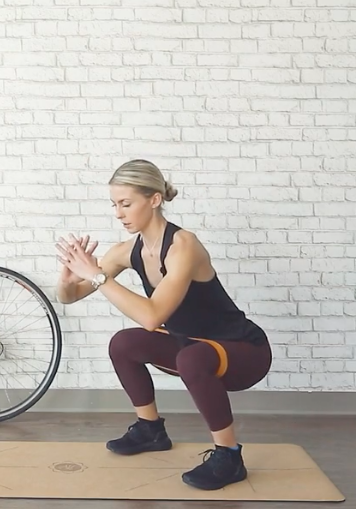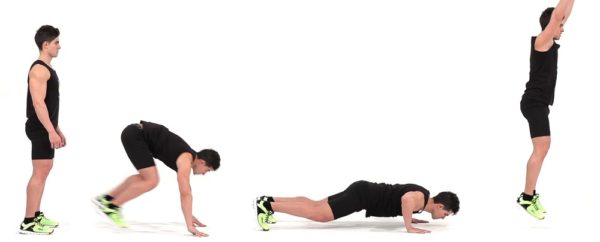Two of the most common problems amongst cyclists are knee pain and lower back pain. In fact, 94% of cyclists experienced injury during a one-year period of study; low back pain and anterior knee pain being prevalent for 58% and 36% of participants, respectively. While the causes of these issues are numerous and varied, there are several similar originating factors between them, and consequently a structured approach to relieving them short and long-term.
One of those commonalities is the presence of an anterior pelvic tilt in the cyclist’s body. This basically translates to the pelvis, which is the bony structure that your spine sits on and your femurs attach to (it also supports the intestines, contains the bladder, reproductive organs, colon, and more), is tilted farther forward than normal.

Different pelvic positions. (Credit: sumaki/Adobe Stock)
This has ramifications for the entire body, and can be the source of much pain and dysfunction in cyclists at all levels of performance, especially compared to non-cycling individuals. In this article we’re going to talk about why anterior pelvic tilt tends to develop in cyclist’s, the problems it can cause, and what we can do to prevent it from happening.
Common Causes of Anterior Pelvic Tilt in Cyclists
When we look at a cyclist positioned on her bike, there are some immediate red flags that we can point out as likely contributors to this postural phenomena we’re calling anterior pelvic tilt. We’re about to see very quickly that just the way people ride their bikes in general (because of their design) is one of the biggest pieces of this puzzle.
Use this picture for reference when reading the next section. (Credit: Artem Varnitsin/Adobe Stock)
Compressed Hips
If you look at the picture above, our rider has her left leg at the top of a pedal stroke. If we look at her left hip, it’s in a fully flexed position, accentuated by her bent forward torso. Because this happens thousands of times every time we trek out for a lengthy cruise, our poor hip flexor muscles are being subjected to a lot of short, cramped positions. Over time, this will make them tight.
Tight hip flexors are one of the main causes of anterior pelvic tilt, resulting also in lower back pain. The reason for this is because one of your main hip flexors, the psoas major, attaches to all five of your lumbar (lower back) vertebrae. When the psoas becomes short and tight, it pulls on all those vertebrae, arching your lower back, and tipping your pelvis forward.
Psoas Major. Notice its attachments to all of the lumbar vertebrae. (Credit: SciePro/Adobe Stock)
Other aspects of our modern lifestyles (mainly sitting, by way of office work, driving, and excessive leisure time) further overwork our hip flexors and encourage them to stay tight 24/7. It’s an inevitable part of riding, and something we need to address it in order to get our hips and spine back into a good position.
Weak Glutes
Having a strong backside is not only attractive, but also incredibly important for keeping your pelvis in a balanced, neutral alignment. The gluteus maximus in particular is your biggest, most powerful hip extensor, and is crucial to maintaining good posture through its action of posteriorly rotating the pelvis and counteracting the pull of the hip flexors.
Our hips never fully extend while we’re cycling. This is largely due to the fact that we’re always hinged over at the hips to keep our hands on the handlebars, and almost completely folded in half when dropping down into the aero position. Cycling has been promoted in the past as a good activity for developing our glutes, but these positions unfortunately make that almost impossible.
Biomechanically, the positions we get into while pedaling make it hard to recruit our gluteus maximus. (Credit: Jacek Dylag/Unsplash)
Because the gluteus maximus is such a big powerful muscle, it often needs intense, full hip extension to be optimally stimulated for growth and development. Cycling doesn’t offer that, and in fact causes the body to recruit secondary hip extensors (hamstrings) to do most of the hip extension as an energy conservation method. Weak glutes = anterior pelvic tilt.
Weak Abdominal Muscles
Cycling primarily occurs in what is called the sagittal plane of movement. This plane divides the body down the middle (refer to below picture) so it is split evenly in half, and accounts for forward/backward movements. There is slight frontal plane (side to side) motion when shifting weight from pedal to pedal and leaning to take hard corners, but it is minimal.
The three anatomical body planes and corresponding motions in the human body. (Credit: VectorMine/Adobe Stock)
This is important because our core musculature needs to be challenged in all planes of movement to function correctly. We need to learn to brace and be strong while twisting, moving our legs independently of our torso, lifting loads off the ground, etc. Cycling limits these opportunities by keeping us fixed and reliant on the bike frame in place of support from our core musculature.
Muscles like the exterior obliques, rectus abdominis and transversus abdominis stabilize the back by creating intra-abdominal pressure and influence the position of the pelvis by rotating it backwards. Cycling discourages mechanisms like this from happening whilst riding, allowing our pelvis to be pulled forward by the hip flexors while the core remains relatively dormant.
Other Causes of Anterior Pelvic Tilt in Cyclists
Having your bike properly fitted is essential to avoid a whole host of injuries, pain, and dysfunction, including anterior pelvic tilt. Having a saddle too high will force you to learn forward excessively to reach the handlebars, compressing the hip joint. If it’s too low, your hip will be forced into extreme flexion at the top of the pedal stroke, further tightening the hip flexors.
Our partners at MyVeloFit offer an AI powered bike fitting app you can use to adjust your bike right at home. (Credit: MyVeloFit)
There are other factors in a person’s lifestyle that are going to encourage anterior pelvic tilt, these include: Having a sedentary job, driving, spending a lot of time sitting on couches and chairs, not participating in any type of explosive movements like sprinting and jumping, etc. All of these things contribute to tight hips, weak glutes, and bad posture overall.
Symptoms of Anterior Pelvic Tilt in Cyclists
Without getting a professional postural assessment done on your body, there are some common symptoms you may be able to relate to that point to an anterior pelvic tilt being present in the body. Some of these include:
- Knee pain: When the pelvis tilts forward, it internally rotates the femur (your thigh bone). This puts awkward strain on the structures in your knee, resulting in pain and discomfort.
- Lower back pain & tightness: Excessive pull from the hip flexors can arch your lower back into a posture known as lordosis, often resulting in significant ache, pain, and tightness of the lower back muscles.
- Mid back tightness: When the lower back arches excessively, sometimes the mid back will round to compensate posturally. This chronically stretches muscles in the mid back, making them feel like they need to be stretched, when actually they need to be strengthened.
- Distended abdomen: When the pelvis tilts forward it stretches the muscles on the front of your abdomen, making them weak over team. This results in a loss of abdominal tone, and a belly that sags forward as the organs fall against a weak abdominal wall.
- Loss of power on the bike: If the core can’t maintain optimal stability, it can’t create a strong base for your legs to push off while pedaling, resulting in a loss of power.
- Hip pain: An individual is likely to experience ache, discomfort, and pain in the hip if the hip flexor muscles are being overworked and holding excessive tension even in time spent off the bike.
Prevention Strategies for Anterior Pelvic Tilt in Cyclists
While the picture we’ve painted so far hasn’t been favourable to our beloved sport, hope is far from lost for those of us with a tilted pelvis! Actually, the fixes for this problem, depending on the cause(s), can be quite straightforward and easy to integrate with some supplemental training. Try out some of these protocols and see what they do for you and your cycling performance.
Hip Flexor Mobility & Stretching
It has become evident now throughout the duration of this article that the hip flexors are major culprits in cyclists with anterior pelvic tilt. To combat the stiffness that is bound to develop in our time on the bike, we can actively work to lengthen and mobilize these muscles so they rest and function in a more balanced position.
Give this exercise a try, the Reverse Lunge w/Leg Lift. It offers an amazing blend of benefits for the hips as a whole. Stepping back into a deep lunge helps lengthen the hip flexors and also strengthen them in those stretched positions at the same time. The added leg lift (and lunge action in general) also helps to strengthen the glutes and pull the pelvis back down into a neutral position.
Perform three sets of 10 reps per leg, adjusting as necessary. You can also hold a dumbbell in front of you for extra intensity.
Strengthen the Glutes
As previously mentioned, the gluteus maximus, your body’s largest muscle, is our most powerful hip extensor, and plays an important role in maintaining a neutral pelvis by rotating it backwards. If we aren’t getting enough activation of this muscle through our riding, then we need to make up for it in our strength and conditioning routine. Here are some ways to make it stronger.
Any sort of squat, lunge, or deadlift type exercise is going to stimulate the glutes and help them develop. A great bang for your buck exercise is the Jump Squat to Jumping Jack, because it combines a deep squat with a jumping jack which forces you to spread your legs and extend the hips simultaneously, an amazing stimulus for all the muscles in your posterior and lateral hip.
See how you feel doing three sets of 10 reps, adding more or less sets/reps to moderate difficulty.
Strengthen the Core
Being fixed on the bike through the saddle and handlebars discourages any significant use of our abdominal musculature. The bike does all the stabilizing for us, a much different environment than a soccer player sprinting down the pitch or a powerlifter lifting a heavy squat. Certain muscles in our abdomen help to posteriorly rotate the pelvis and counter the pull of the hip flexors. Those are the ones we are going to focus on in this next exercise.
The deadbug is a wonderful introduction to low back/trunk stability and overall core strength. The main focus is keeping your lower back flat on the ground as you move alternating arm/leg away from the torso. By keeping you back flat, you’re using your exterior obliques and rectus abdominis to counter the pull of your hip flexors, and strengthen the core in concert with your extremities.
Three sets of 10 total reps (five/side) is a good start for this exercise. If you feel your lower back coming off the ground, limit the range of motion of your limbs so you can maintain that hollow position.
Build a Better Body With Dynamic Cyclist
The above exercises were pulled from our extensive mobility, strength, and conditioning programming over at Dynamic Cyclist! We have hundreds of follow along instructional videos and routines to help you correct postural problems, prevent injury, get stronger, and become an overall better cyclist in the comfort of your own home! Sign up for a 7-day free trial by heading over to our website.












 Retain Muscle Mass & Correct Imbalances
Retain Muscle Mass & Correct Imbalances More Power on the Bike
More Power on the Bike



